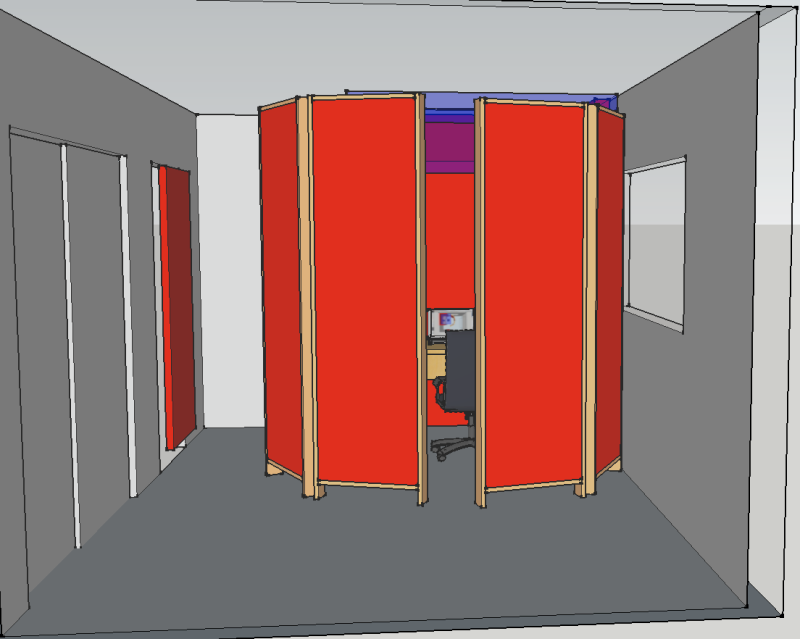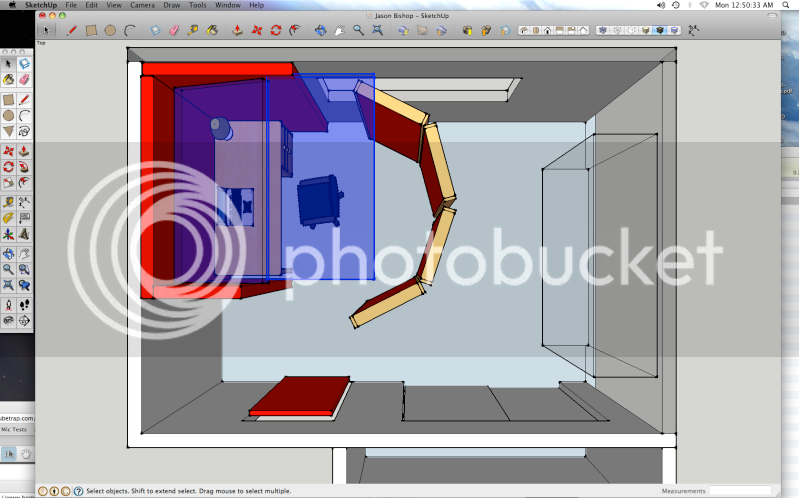Is this to remove room reverberation or to isolate like a gobo? My own experiments in DIY'ing one went like this: My goal was to dry up my vocal. I mounted some auralex foam on a pair of 18" square MDF panels attached with a hinge closed to about a 90 degree angle. When I placed the mic in front of these and sang, it sounded like I was inside an 18" wooden box. Honk, woof, honk... I repeated the same setup with the auralex taped to a pair of mic stands with no backing MDF. That did exactly what I wanted. It sounded like I was in a large dry vocal booth. The foam by itself seems to let the L and LM pass right through and doesn't set up mini "room" modes/reflections. I suppose a good L/LF absorber would work too, because the frequencies would die in the absorber rather than be reflected back.
It's still on my to-do list to make a frame for these foam squares without any backing so I can skip the duct tape and mic stands.








